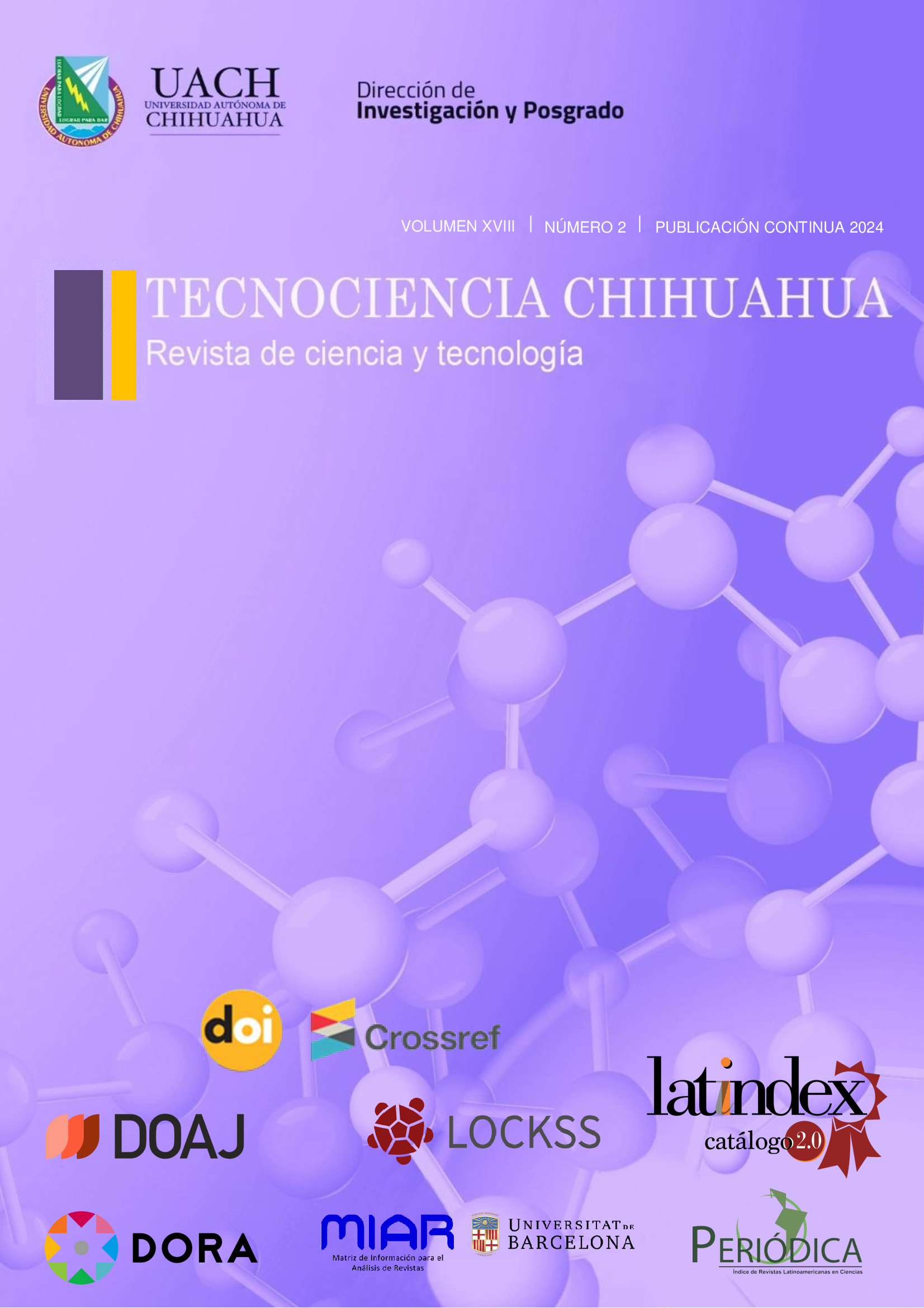La química detrás de los perfumes y fragancias
DOI:
https://doi.org/10.54167/tch.v18i2.1564Palabras clave:
perfumes, esencias, terpenos, productos naturalesResumen
La química de los perfumes y esencias es un campo de la química de gran relevancia económica. Su origen data de la antigüedad cuando se utilizaban resinas y aceites esenciales en prácticas religiosas. Aunque en sus inicios su uso estaba restringido a la realeza y los sacerdotes, con el correr del tiempo, el uso de perfumes y fragancias se fue popularizando. En la actualidad es una actividad de gran relevancia económica derivada del uso de compuestos químicos no solo en la elaboración de perfumes sino también de productos de consumo masivo como jabones, detergentes y champú. Con la finalidad de despertar el interés de los lectores, especialmente jóvenes con inclinación hacia las ciencias químicas, en este artículo se presenta una visión general de la química relacionada con las materias primas tanto de origen natural como sintético usadas en la elaboración de perfumes y fragancias, abordándose de manera general su origen y estructura química, así como algunas aplicaciones.
Descargas
Citas
Armanino, N., Charpentier, J., Flachsmann, F., Goeke, A., Liniger & M., Kraft, P. (2020). What's hot, what's not: the trends of the past 20 years in the chemistry of odorants. Angewandte Chemie International Edition, 59, 16310-16344. https://doi.org/10.1002/anie.202005719.
Boelens, M., Boelens, H. & Boelens, H. (2003). Some aspects of qualitative structure-odor relationships. Perfumer and Flavorist, 28, 36-45.
Breitmaier, E. (2006). Terpenes: flavors, fragrances, pharmaca, pheromones. Wiley.
Britten-Kelly, M. (2001). New aroma chemicals: The rosy future. Perfumer and flavorist, 26, 34-40.
Clark, G. S. (1990). Leaf alcohol. Perfumer and Flavorist, 15, 47-52.
David, O. R. & Doro, F. (2023). Industrial fragrance chemistry: a brief historical Perspective. European Journal of Organic Chemistry, 26, e202300900. https://doi.org/10.1002/ejoc.202300900.
Diario Oficial de la Federación. (2021). Reforma a la Ley General de Salud que prohíbe a la industria cosmética experimentar con animales. Nota N° 658.
Elterlein, F., Bugdahn, N. & Kraft, P. (2024). Sniffing Out the Sustainable Future: The Renewability Revolution in Fragrance Chemistry. Chemistry European Journal, 30, e202400006. https://doi.org/10.1002/chem.202400006.
Forezi, L.S.M., Ferreira, P.G., Hüther, C.M., da Silva, F. de C. & Ferreira, V.F. (2022). Aqui tem Química: parte IV. Terpenos na Perfumaria. Revista Virtual de Quimica, 14, 1005-1024. http://dx.doi.org/10.21577/1984-6835.20220055.
Fráter, G., Bajgrowicz, J.A., & Kraft, P. (1998). Fragrance chemistry, Tetrahedron, 54, 7633-7703. https://doi.org/10.1016/S0040-4020(98)00199-9.
Gopi, S., Sukumaran, N. M., Jacob, J., & Thomas, S. (Eds.). (2023). Natural Flavors, Fragrances, and Perfumes. Chemistry, Production, and Sensory Approach. Wiley-VCH.
Korthou, H., & Verpoorte, R. (2007). Vanilla. In Flavours and fragrances, chemistry, bioprocessing and sustainability (pp. 203-217). Springer.
Kraft, P., Bajgrowicz, J. A., Denis, C., & Fráter, G. (2000). Odds and trends: recent developments in the chemistry of odorants. Angewandte Chemie International Edition, 39, 2980-3010. https://doi.org/10.1002/1521-3773(20000901)39:17%3C2980::AID-ANIE2980%3E3.0.CO;2-%23.
Ohloff, G., Pickenhagen, W., Kraft, P., & Grau, F. (2022). Scent and chemistry: the molecular world of odors. Wiley.
Petroianu, G. A., Stegmeier-Petroianu, A., & Lorke, D. E. (2018). Cleopatra: from turpentine and juniper to ionone and irone. Die Pharmazie-An International Journal of Pharmaceutical Sciences, 73, 676-680. https://doi.org/10.1691/ph.2018.8142.
Pino Alea, J. A. (2015). Aceites esenciales: química, bioquímica, producción y usos. Editorial Universitaria.
Rowe, D. J. (Ed.). (2009). Chemistry and technology of flavours and fragrances. Wiley.
Scognamiglio, J., Jones, L., Letizia, C. S., & Api, A. M. (2012). Fragrance material review on cis-jasmone. Food and chemical toxicology, 50, S613-S618. https://doi.org/10.1016/j.fct.2012.03.026.
Sell, C.S. (Ed.). (2008). The Chemistry of fragrances–from perfumer to consumer. Segunda Edición, RSC.
Sell, C. S. (2019). A fragrant introduction to terpenoid chemistry. RSC.
Singer, M. S., & Shepherd, G. M. (2005). Toward a rational structure–function analysis of odour molecules: the olfactory receptor TM4 domain. In Flavours and Fragrances (pp. 3-10). Woodhead Publishing.
Sommer, C. (2004). The role of musk and musk compounds in the fragrance industry. In Synthetic Musk Fragances in the Environment (pp. 1-16). Springer.
Stepanyuk, A., & Kirschning, A. (2019). Synthetic terpenoids in the world of fragrances: Iso E Super® is the showcase. Beilstein Journal of Organic Chemistry. 15, 2590-2602. https://doi.org/10.3762/bjoc.15.252.
Surburg, H., & Panten, J. (2016). Common fragrance and flavor materials: preparation, properties and uses. Sexta edición. Wiley.
Turin, L. (2006). The Secret of Scent. Adventures in Perfume and the Science of Smell. Harper Collins.
Publicado
Cómo citar
-
Resumen685
-
PDF948
-
HTML28
Número
Sección
Licencia
Derechos de autor 2024 TECNOCIENCIA Chihuahua

Esta obra está bajo una licencia internacional Creative Commons Atribución-NoComercial 4.0.

















